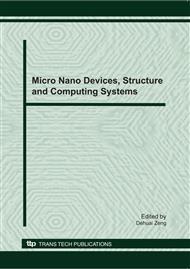p.210
p.216
p.222
p.228
p.232
p.236
p.242
p.248
p.252
Image Enhancement Based on Fractional Differential and Image Entropy
Abstract:
In this paper, a new image enhancement method is proposed based on fractional differential, which can select the differential order automatically by the difference of mutual information (DMI). DMI describes the increase of mutual information in original and enhancement image. Being a measure of ascertaining the ehancement effect, it is considered getting the information balance in the images processed by different differential order. According to it, a criterion of selection differential order is put forward. Image convolutions are implemented with fractional operator in different scales, and then DMI of adjacent scales are calculated. The differential order can be selected in which the DMI is the mininum. The experimental results indicate that the proposed method is effective, and has better result compared with other methods.
Info:
Periodical:
Pages:
232-235
Citation:
Online since:
December 2010
Authors:
Price:
Сopyright:
© 2011 Trans Tech Publications Ltd. All Rights Reserved
Share:
Citation:


